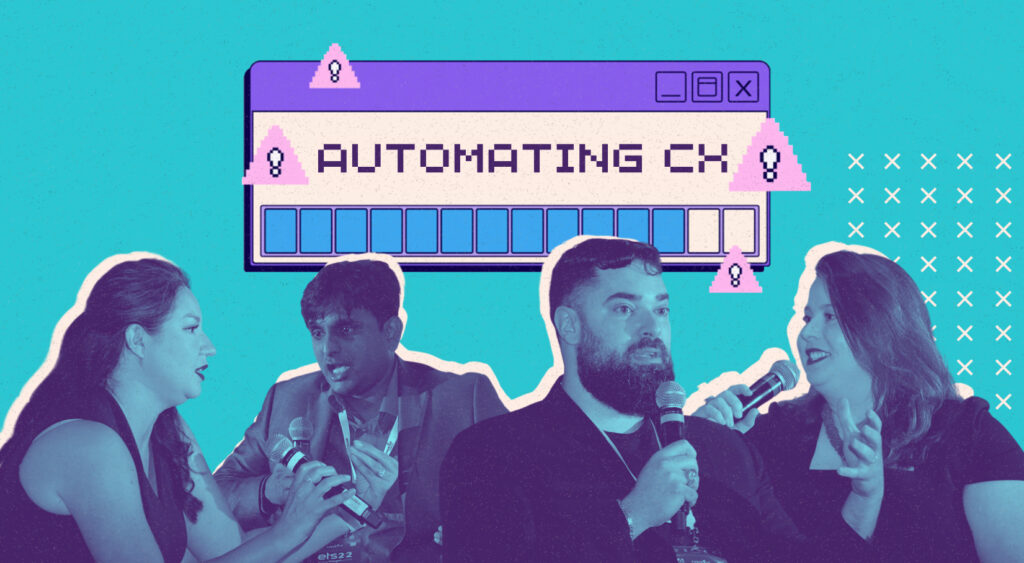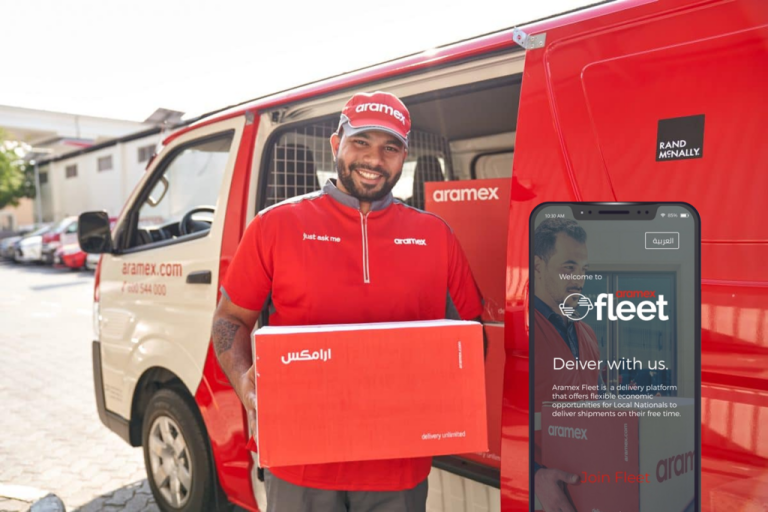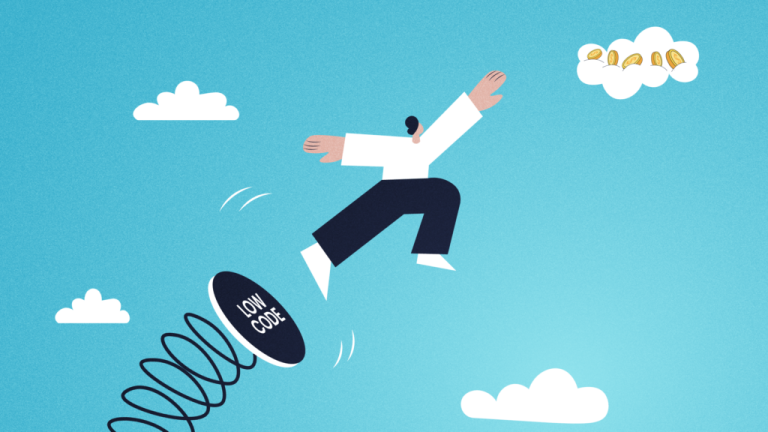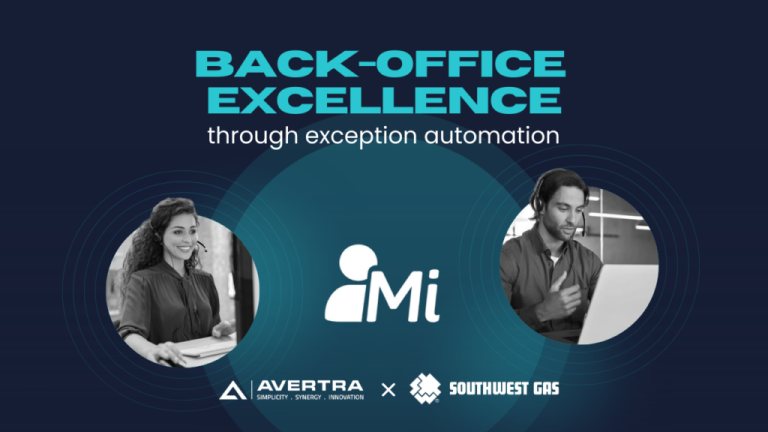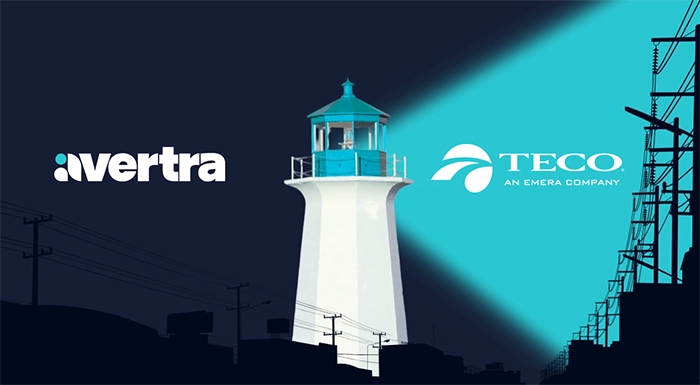The ever-evolving demands of customers are driving utilities to adapt throughout the entire enterprise. To bring this to reality, utilities have shifted their focus on new marketing strategies and technologies to keep up with today’s customer while supporting the workforce. This session from the Energy Thought Summit 2022 – Power Up will include our expert, Bashir Bseirani, CEO and CTO at Avertra, as well as Laxman Challa, Senior Manager, Application Services at Southwest Gas Corporation (SGC) and Christina Oliver, Vice President of Strategy and Process Improvement at Lower Colorado River Authority (LCRA) to cover what the customer experience landscape looks like today and how utilities are overcoming challenges with back-office innovations and the help of automation.
What do you think the customer experience is going to be in the future?
Bashir Bseirani: As a utility customer, we see the future of customer service driving the utility strategy as well as who the future workforce of the utility is going to be. There’s a direct correlation between the two. Let’s be realistic. As a customer, I don’t want to talk to any of you. I want to be able to do whatever I want, whenever I want, as fast as possible, and on my own channel. As a customer, I also expect each of you to give me advice around how I can improve the quality of my usage of your commodity, as well as my opportunities of cost saving. I expect you to be available 24/7. How do you support that when your organization doesn’t give you enough budget to hire people to support this change in customer demand? IT budgets are shrinking too due to our current economic situation. You don’t know where to make the right investments. Is it on the asset side? Grid side? Customer side?
The key theme is proactivity. This is what I see as the future of customer experience and customer service. But that comes with its own set of complexities around data collection, making the right decision, and making sure that your automation is recommending the right things for the right customer, which also goes around customer segmentation. This all ties into data quality and data availability.
Laxman Challa: Today, you see a shift from the customer experience to the digital economy. Customers just want to self-serve. They want to interact with different channels, and not just in a traditional way. They want to have more digital channels so the way they interact with utilities will shift their investments to accommodate these digital transformations. At the end of the day, the customer has options to choose from. This is why it is important to make sure that the customer journey is seamless and simple. This way, when we have a heavily regulated market where price is not a key differentiator, you need to differentiate yourself with other organizations that serve the same utility through the customer journey. But how do you differentiate and partner with them, and get more insight on what the customer is actually looking for? This takes effort in terms of infrastructure, technology, and innovations that require a transformation platform. This is like digital assets, or digital economy. It’s embracing companies with more opportunities, challenges, etc.
What’s driving the response from utilities, from the customer demand side?
Bashir Bseirani: Survival. Without our customers, we don’t have anything. There’s competition all over right now. Traditionally, a utility wouldn’t be seen as a typical competitor. Whether it’s through distributed generation, buying your own solar panels, or new fuel cell technologies, the gas in the electric industry is going to compete for that home. Somebody has to come out the winner. Or it could be a marketing company that comes along and ends up giving a better product and service than the utility at a much cheaper cost. Then, the utility actually loses its customer – their biggest source of revenue. It’s more the concept of survival at this stage because of how fast the market is shifting and expectations are changing.
If you look over the next ten years, you’re going to have a brand new consumer, which is our TikTok generation like my and your kids, and everybody else in that world. They have a totally different expectation of what customer service is, like what they should get for free, what should be paid for, and what is a basic necessity of life. So how do you start preparing? Not only do you have the current market disruptions that are happening right now, but also how do you start preparing for the future generation of the new type of customer that’s coming in the next ten years? That’s where I believe utilities have to look. They have to relook their economic and business model, as well as who and how they hire to make themselves a lot more competitive in the market space, and create different types of economic models for us as customers to stay loyal to the brand. Utilities need to start thinking like marketing companies more than anything else, instead of just a traditional asset-based organization.
Christina Oliver: You’re absolutely right. Our customer base is having these robust and rich experiences throughout the lifecycle of any industry; the way you buy a car, bank, consume your entertainment. They are expecting these different types of rich, robust customer touchpoints. There’s a real gap in our industry, but also an opportunity for us to create those real, rich differentiations.
I love what you said about marketing. I really do think outside of Coca-Cola, the utility industry has the most robust ability to market than any other product I’ve ever seen. Whether you have a GED or PhD, you have the same reasonable expectation that when you turn on the light, something happens. It gives us such an incredible opportunity to tell that story and market that product to a diverse and changing demographic instead of customers. I think the opportunity there is endless. I love what you’re saying. It’s a marketing journey and starts with customer obsession and customer centricity.
Laxman Challa: The utilities sector is like never before. You see eCommerce and the way the product categorizes based on the behavior of the customers and how the transformation has been done. There should also be a shift on utilities because now, thanks to smart devices, consumers are becoming pros. They have many smart devices and are generating some kind of capacity of electricity, and they want to take advantage of it because now, the shift becomes “I am producing electricity, how do we benefit? How do we make sure that my investments are leveraged so that I am equally benefited?” Now, you see a lot of EV adoptions, and clean and renewable energy. They became a huge market. Providing customers with the power of choice turns them into a loyal customer. Loyal customers speak for you. So how do we engage them through this? Because the operations side has expectations. When they see some sort of outage, they want a front. They want centered notifications instead of picking up the phone and trying to figure out what’s going on. They want to have real-time notifications and other features, including ETA, like the Uber experience. That way, communication is seamless. They don’t want to give a time window. We are coming between 9am-12pm is an outdated way of doing business. Now, customers want an exact time. They want to see who is coming and if there is a picture of the technician so they know the same guy is coming to their home and knocking, and if they are required to go inside. Today, that is the transparency customers are looking for. You see the back and front office mostly working remotely. Now, people are also working from home. They want to have that kind of user experience, which is key for the customer journey. These are the stepping stones to understand user behavior and engage with every interaction.
Bashir Bseirani: Southwest Gas invested hundreds of millions of dollars to revamp their entire CIS, workforce management, front office, and back-office. But now, you have all these new systems and omnichannel touchpoints, but not enough people to manage them. How do you support that now? As an agent, you were used to logging into one system only. Now, you’re expected to log into four, five different solutions to resolve the simple question of: “Why is my bill high?”. What type of customer experience and benefit am I getting from implementing all these new systems? It adds a lot of complexity. When looking to revamp your existing IT landscape, the biggest question you should be asking yourself is, “How can I make the life of my internal employees easier first?”. This is going to have a downstream benefit and impact on my customer experience.
At Avertra, we say “A great customer experience starts with an even better employee experience”. So how can I bring the right tools and automations in place? That’s something we helped Southwest Gas with. They had a 24, 25-person back-office before this program. Then, when they went through their acceptance testing, they realized the amount of exceptions that are now being created because of their smarter systems. What do you do to support that? We partnered with Southwest Gas to put out some automation around resolving these exceptions that are happening on a daily basis across your channel, whether it’s from self-service, meter readers, field technicians, front-office, or the system itself that is creating exceptions.
Right now, our system is doing 130,000 to 150,000 automated decisions a month on behalf of agents, allowing Southwest Gas to start putting a strategy of reducing the total number of back-office agents that they had to up. When they went live, they realized, 25-30 is not enough. We have to double, triple the capacity. Now, we’re figuring out how to bring those resources down to put those teams back into what their typical job is. We took people from different parts of the organization and said, “Now you have to support the back-office”. “Well, that’s not my day-to-day job”. “Well, I need you to because I don’t have the budget to go hire anybody else”. And now, we’re increasing the number of daily exceptions. So we used automations not as a mechanism of taking people’s jobs away, but to allow teams to focus on the right things that will help improve their job efficiency and have a downstream impact on the customer experience. Because if you let something go out of the back-office and it ends up on the bill, the customer will call you. It’s going to generate this entire cycle where now, your front-office is impacted by something that passed through your back-office.
Once you have these automation tools in place and you start gathering all of this data, how are utilities able to take things to the next level?
Christina Oliver: One of the things that I think is really important, especially as you are starting on this automation and engagement journey, is figuring out that upskilling and retaining journey for your employees. One of the things that’s scary when you start hearing about automations and saying, “We’re going to dramatically reduce our call center size”, is what are we doing with these folks? One of the things that makes utilities really wonderful, unique, and special is the fact that we retain our employees. They stay for a long time. At LCRA, we have employees that stay for an average of about 11 years. Part of it is creating that long runway of seeing what is coming down the pipe in terms of automation, doing your jobs differently, and giving your employees the opportunity to either, change into a different role to upskill and learn what’s coming down towards them, or to just make those changes that make things more efficient. I do think robust automation comes with happy employees and making sure they know that expectation is smart.
One of the things that you see with automation is just an improved business process. We’re able to build workflows that allow people to do their jobs more seamlessly. You’re looking at integrations in between systems that allow different business units to have insights and transparency into what’s going on and what to expect, which I think ultimately flows down into that customer-centric view.
Joyce Deuley: There are lessons learned that the utilities industry can take from what happened in the manufacturing sector a few years back with workforce automation. How did you prepare for the tide that was coming?
Christina Oliver: It feels extraordinarily audacious to have a customer that wants real-time conversations, and to understand when their meter reader is coming out, or when they can expect service. It feels audacious in the energy space, but it is not audacious inside of everyday life. I shouldn’t talk about how often I eat Domino’s Pizza, but I can tell you I know exactly where my pizza is on its journey. These are not new technologies – we’re just leveraging them in a way that feels new to us.
It’s important for us to take lessons learned from companies that have done this hard work. When you start thinking about automation, the manufacturing sector is one to see their lessons learned, so we can then start applying them to our journey. If we’re a few years behind, look at the people that are doing it well. The people that have had major setbacks. The way their employees had to transition from doing a job that was manual to something that’s more automated, and to really take those lessons learned to heart.
Bashir Bseirani: We’re talking about the happiness of internal employees. The different types of employees that a utility should be looking at. Imagine the call center or the back-office of the future. Let’s say you invested in all your IVRs, chatbots, and decision engines, and money wasn’t an issue. What does your call center look like right now? It’s going to be crickets. It’s barely going to get any calls. So who is the call center agent of the future and what do they need to be prepared?
If any of you have seen an internal utility operations room where they’re looking at their SCADA, GIS maps, and all these data points on the screen, and you’re seeing asset health and different types of signals coming in from the field, I see the future of the call center being almost the same thing. It’s more of an operational room looking at all the different types of live conversations happening in real-time across your customer base. What are the decisions that your systems are making in real-time? Whether giving somebody a credit, forgiving them from a disconnection fee, or sending a certain type of notification and letter, and giving some type of predictive scoring to say, which of these customers will actually end up calling due to a decision that the automation took? This is where we could see the future of the utility workforce changing with the operational and process changes that come with it.
At the end of the day, if all your programs are as successful as you want them to be, and you’re driving the customers to those channels, what does that mean? What’s the end game? What’s the ten-year lookout for that? How does that change my back-office and how does my back-office work on a daily basis? What type of new exceptions are going to come to my back-office? What do I need to train my people on for them to start analyzing all of this sea of data that’s coming in? The recommendation and AI engines can give you recommendations, but if your team doesn’t understand why it actually made that recommendation, then how are you ever going to govern it to make sure that those recommendations are valid, true, and have the best business value at the end of the day? I see how this is going to be a big shift because many of our partners and utility customers are going through these programs to solve today’s problems, but I don’t think a lot of them are looking to the future to say: “What happens if I’m a hundred percent successful in doing this?”
Laxman Challa: Billing is the major driving factor for 30% of the calls. If customers are happy, they don’t have to call the call center. But we still have to make whatever channels we have more self-sufficient. The back-office operation process needs to be optimized in a way that can reduce the call volume. These are all very interrelated. Oftentimes, the back-office may not be directly impacting customers, but it doesn’t mean they’re not related to the customer experience journey. Those are all internally connected. That business or process efficiency on the back-office is definitely a win-win situation overall for employees, suppliers, or even customers. I think that is where you see a tremendous amount of efficiency because there are so many systems. Each business process requires demands like different IT systems in order to cater to those business requirements. When you see the silos in those processes, that is where data will not fall across all the systems and you see a huge gap. It is very common. Oftentimes, when you call a call center, they will be routing to different departments because their expertise is in some areas, or sometimes you are in the wrong queue. These all increase the average handling time because you were bouncing back between different agents who were ready to support you.
By the end of the day, it’s all about gathering the data. Why are we getting these calls? What are the driving factors for us? Consolidate and put that in data models where you can see based on the patterns, you automate to some extent so that you don’t have to deal with that. There are many things that can come based on how you operate your business. Based on your billing, sometimes you have to offer different rates for different segments of customers. Based on different states, there are regulatory requirements where you have to change your billing rates. You need to have multiple billing cases that are actually in the back-office operations efficiency that will throw out exceptions because it’s all volume. The back and front-office need to be integrated more. That is where you can break the silos and have a more positive experience on the customer journey
What does it look like when you’re actually implementing these automation tools in your departments? What does the journey look like? What are some of the challenges that come with that?
Laxman Challa: We think automation solves all problems, but that is not the case. In reality, it’s about your core business processes and how good they are. You need to work with automation. Whether you want to go big bang or take specific use cases based on the priority, you need to train. Automation will not work 100% correct. You need a human to make sure that those business cases are bundled into automation cases. Otherwise, don’t expect things to run on the fly. That never happens. You need to work and optimize efficiently.
When we implemented our mission, we saw a 50%, not a 100% success during the project. We started looking at other data points and why we were unable to improve it further. That data actually helped us put the data models and data scientists behind the scenes to understand patterns and behavior based on different geographical locations. Customers want to have high bill notifications because in some places, the bills can be high. So providing the data well in advance, notifying the customers that there is unusual activity going on, and understanding and communicating pays off. But it is a continuous journey. You need to take one process each time, then add up as you go. If you want to handle it 100%, it’s a big, big change and you may fail. It’s going to be a journey. You need to add one business case and see how it’s doing, then add more. Based on how you operate, you might have hundreds of business processes.
In our case, we focus more on the billing exceptions, device management, and service order exceptions. That is our core business. We serve gas. That is where we put together case studies and build those automation models that help us resolve some of them. We have nightly jobs automated based on the thresholds that we set and parameters that we see. It automatically resolves. If something does not fit into that particular parameter window, then it’s an exception that requires manual intervention to figure out why this bill is different. Something unusual is happening. You need to try automation tools and optimize it over time.
Bashir Bseirani: It starts with realistic expectations. When we first started the program with Southwest Gas, they looked at me and said: “Is this really going to work? Is it going to solve a hundred percent of my issues?” I was like: “No, it’s not”. I can tell you what you want to hear, but I’m going to tell you the truth because that’s a better partner. Is it going to work? Maybe, if you invest in the continuous improvement of it. I said, “How efficient is your employee from day one? Don’t you have to train them? Don’t you have to keep investing in them? Don’t you have to give them different types of scenarios throughout the seasonality of the life cycle of the work to start learning more?” There is no difference in treating automation as you would treat a freshman in college, or your children trying to learn a new language or skill. It’s exactly the same thing, and that’s the expectation that needs to be set. As vendors, it’s on us to not try and sell this as a magic wand that’s here to solve every single problem. Instead, it’s setting a foundation for you to get to a point where you have enough information to make logical decisions as a business, and use the data to help you make those decisions.
Our journey with Southwest Gas has been awesome to date. During the project, we were using dummy data and it shot up during the initial testing cycles. It was great. When we went live, real data was coming in, which is the most important thing. Through any single data science or automation journey that you have, invest in data. You need to make sure you have the right, real-world data, and not just, excuse my language, crappy, simulated data that at the end, is going to give you many false positives. Taking that time and investing in data is critical because when we went live and our automations first ran, it was 48% accurate. What happened to the 85%, 86%, or 87%? We didn’t take all these 20 parameters into consideration in real-world scenarios. Our data scientists had to tweak, tweak, tweak, tweet, and tweak. Right now, I think we’re a year into it being live in production and we’re at a 92% to 96% accuracy rating, which is great. It’s still not 100%. It’ll get as close to a hundred as possible, but it might not ever get there due to the changes in the nature of all the different environments and systems around the automation. If you think that this automation should automatically adapt to these 20 other systems that I’m adding, that’s not going to happen. It needs to know that you’re adding three more systems around demand, response, outage, and whatever it is that you’re putting out there. It’s a continuous journey, improvement, and innovation. You have to start thinking with an automation-first mindset once you actually make this investment, or at the end of the day, you’re wasting your time, money, and people’s time.
We’re excited about where things are going right now and seeing how we can now extend this across the enterprise. The most important thing is that we’re collecting the right amount of data and information to understand how these processes are being executed within Southwest Gas and for those processes that our automation can’t figure out and resolve. Like Laxman said, we put in a process to move those to the human agents versus our digital agents that we have running. Then, we monitor to see how those agents resolve the problem, and then, we take that data back and go back and retrain our automation so the next time it happens, it should be able to pick it up successfully. There are literally unlimited types of corner cases that you end up finding, whether they’re commercial customers, landlords, or people going into bankruptcy. There’s so many unique situations within the utility space that you can’t just rely on a fixed set of processes and say, this is how everything runs because we’re all finding that that’s not true.
Laxman Challa: Now, the customer is the king. The customer drives the demand on IT to evaluate and change the technology at a fast pace. Sometimes, it’s challenging. The infrastructure is not ready. It requires many digital transformation projects. We are embracing many cloud journeys in the utilities sector like never before. With the pandemic, you see supply chain issues because you cannot spin off the hardware that stores a mass amount of data that comes from all these digital channels, whether it is IVR, chatbots, or mobile. Mobile adoption has increased a lot. The mobile adoption is: I just want to do everything, whether it’s chatting with an agent, self-serving, or texting in real-time. Now the customer’s demand is, “I would like to get an automated response, or talk with an agent in real-time. Real-time texts are now a feature. You send one message, then expect to finish other things. This is a win-win situation for customers and companies. This will help improve many customer experiences. You don’t have to wait for minutes or hours in the call center for your inquiry to be answered.
I think future investments will be more digital. Your transformation journey on the CS implementations should keep customers in mind, as well as mobile changes and requirements. Now, these are actually posing greater threats to cybersecurity. It becomes challenging. If I have a customer’s personal information, it’s difficult for me to manage it because in case of any data breach, you are accountable for it. Cybersecurity becomes a power. The first priority for any company when you are getting this massive amount of data from different streams like social media – structured and unstructured data, is setting what sort of information you need in order to identify your customer. This definitely poses great risks, challenges, but also new opportunities and adaptations. You need to keep in mind this new way of operating a business to keep your customers loyal. Customer demands are changing and driving a lot.
Christina Oliver: The customer is getting incredibly robust experiences throughout their entire lifecycle of the products that they’re encountering every day. It’s a limitless opportunity in the utility space. We have the real fortune of looking at people who have done it well. We’re not necessarily at the bleeding edge where we’re looking at how we can engage customers through their lifecycle journey. There’s a lot of lessons learned. I am excited, fascinated, and energized by the opportunity to continue identifying new customer segments and ways to serve the customer, and analyzing and putting some rigor behind that customer journey and changing customer needs, especially living in the central Texas area, just knowing how we are changing demographically, geographically, and psycho-graphically, and how that impacts our energy usage consumption and our demands on how we want our kind of energy journey to be. We have smart homes and devices. We just have many different needs that need to be met. I think it’s a limitless opportunity inside of our industry, and I’m really excited about that.
Bashir Bseirani: I think automation’s really sexy. There’s a nice little asterisk there. Just like anything else that’s sexy, if you don’t take care of it, focus on it, and give it the time and attention it needs, you’re not going to get the value out of it. That’s the most important lesson here. Secondly, with its direct impact on customer and employee experiences – because we can’t keep forgetting about the employee when talking about the customer – there’s going to be a sea of data that’s going to be collected because of this automation. So how do you start capturing and looking at things, not just for first call resolution rates, but how do you start capturing and analyzing response times or reactions to certain things within the automation? How does it change the life of my employee and customer? How can I use all this data to better understand who our people and customers are? That’s the only way you’ll be able to create new types of economic models to keep us around and your brand really thriving as a utility to drive brand and customer loyalty at the end of the day.
What’s the best way to break-through status quo thinking within a utility up against billboards and print instead of digital and an audience of one?
Christina Oliver: Hire good people. The best way to break-through status quo thinking is to not hire status quo people. Hire for curiosity. Hire for people that share your values towards customer obsession. The smartest utilities of the future hire communicators and marketers in the same way they hire the best engineers and scientists.
Laxman Challa: Compassion for your customer. How do you make sure that you partner with them during difficult situations? That is where companies now have to invest more in. The customer is at the forefront. What options do you have in order to make them happy? For example, flexible payment plans, in case of any hardships. These are all very basic amenities, like utilities. You cannot survive without them. It’s not like something you can live without. The shift is more empathy towards the customer. Make sure you value them because you have good and bad customers. You need to segment and treat them with loyalty. That is where you see a successful customer journey.
Bashir Bseirani: I’ll keep it short. Change your internal culture first. That’s really it. For those people that don’t want to jump on the train and be part of the new world, it’s unfortunate to say that if you can’t repurpose, then you need to replace. It’s a harsh world out there. I hate saying that because nobody wants to take anybody’s food off their plate, but at the end of the day, it’s a business. You have to run it like one. Like Lockman said, you have to start bringing in a lot more different types of cultures and empathetic ways of looking at your process execution, which comes with a total shift in mindset.
Avertra brings together the expertise and drive to empower clients with solutions that cater to their evolving customer, and Southwest Gas (SWG) is no exception. With an ongoing digital strategy set in stone, Avertra aims to continue nurturing its fruitful partnership with SWG by providing exceptional digital experiences, powered by automation, back-office optimization, and much more.













